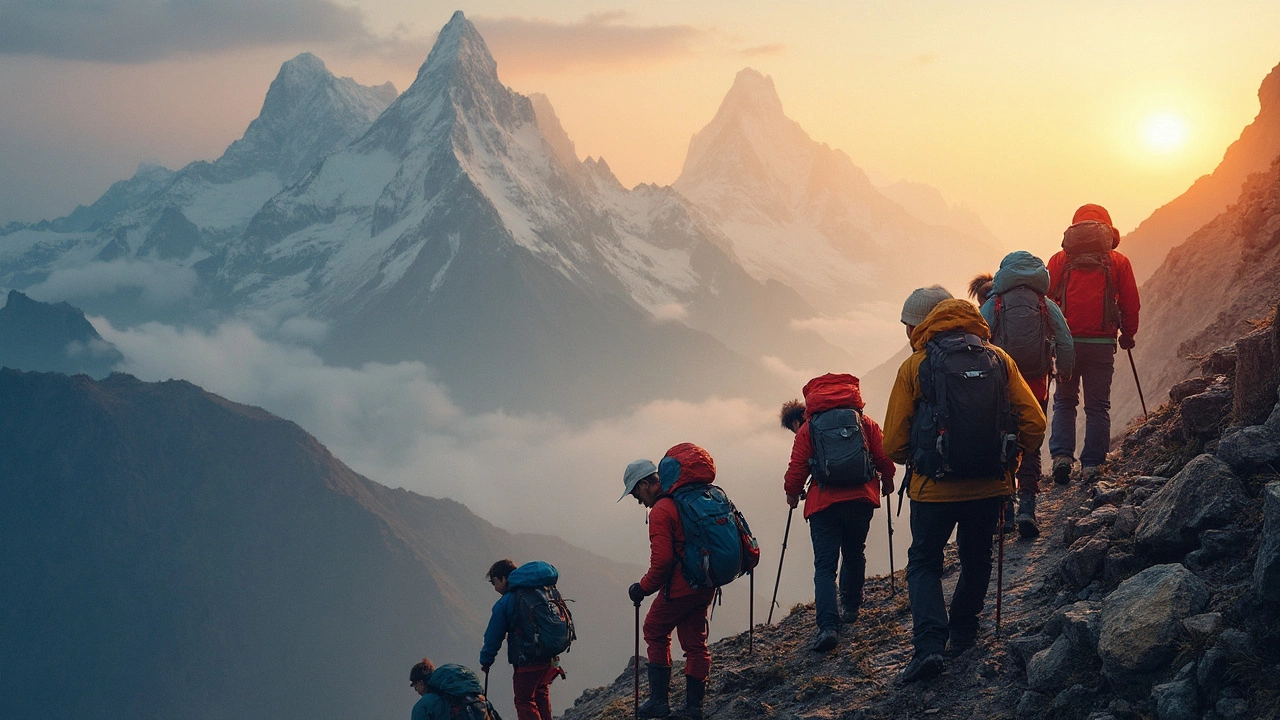SEARCH
Goecha La Trek: Your Quick‑Start Guide to Sikkim’s Iconic Pass
If you’ve heard about Goecha La and imagined standing on a snow‑capped ridge with Kanchenjunga looming behind, you’re not alone. This 4,500‑meter pass is one of the most photographed spots in the eastern Himalayas, and the trek to get there is as rewarding as the view. Below you’ll find the basics you need to plan the trek without getting lost in endless details.
When to Go – Best Season and Weather Tips
The sweet spot for Goecha La is late spring to early autumn, roughly May to October. During these months the weather is relatively stable, the rhododendron forests are in full bloom, and the mountain passes are clear. Monsoon clouds can obscure Kanchenjunga, while winter brings heavy snow and closed roads. Aim for late September or early October if you love crisp air and thinner crowds – the scenery is still vibrant, and you’ll have a higher chance of clear skies.
Route Overview – From Yuksom to the Pass
The classic trek starts in Yuksom, the historic capital of Sikkim. From there you’ll trek to Sachen, then to the base camp at Tshoka (3,000 m). The next day you move up to Dzongri (4,020 m), a popular viewpoint for sunrise shots. The final push to Goecha La is a steady ascent over rocky terrain, reaching the pass by early afternoon. Most trekkers finish the round‑trip in 7–9 days, allowing for acclimatization and a day for rest at Dzongri.
Key stops include:
- Yuksom: Easy walk, cultural sites, and a good place to pick up permits.
- Sachen: First night in a tea house, great for getting a feel for the altitude.
- Tshoka: Camp or guesthouse, a chance to adjust before the high‑altitude push.
- Dzongri: Sunrise over the Kanchenjunga range – don’t miss it.
- Goecha La: The ultimate view; look out for the majestic north face of Kanchenjunga.
Acclimatization is crucial. Spend at least one night above 3,000 m before you attempt the pass. If you feel any headache or shortness of breath, rest an extra day – the trek is forgiving if you listen to your body.
Permits, Gear & Practical Tips
You need three permits: the Inner Line Permit (ILP) from the Sikkim Tourism office, a Protected Area Permit (PAP) from the Ministry of Home Affairs, and a Trekking Permit from the Sikkim State Government. Your trekking agency usually handles paperwork, but keep copies handy.
Essential gear includes:
- Sturdy trekking boots with good ankle support.
- Warm layers – down jacket, fleece, and a windproof shell.
- Sun protection: hat, sunglasses, and SPF 50+ lotion.
- Sleeping bag rated to –10 °C (or colder if you plan to camp).
- Reusable water bottle + water‑purification tablets.
Hydration is a must; you’ll lose a lot of fluid at altitude. Aim for 3‑4 liters a day and add electrolytes if you sweat heavily.
What to See – Beyond the Pass
While the view of Kanchenjunga is the headline act, the trek offers plenty more. Spring brings a carpet of pink rhododendrons, while autumn paints the valleys in gold. Keep an eye out for Himalayan black bears, red pandas, and musk deer. The local Sikkimese villages give a glimpse of tribal culture, and you can try momos and thukpa at tea houses along the way.
When you finally stand on Goecha La, take a moment to soak in the silence. The wind, the endless sky, and the towering peaks create a feeling you’ll remember long after you’re back in the city.
Ready to book? Start by choosing a reputable trekking company, confirm your travel dates, and begin packing. The Goecha La trek isn’t just a hike; it’s a chance to experience the Himalayas in their purest form.

India's Toughest Trek: The Goecha La Challenge
Goecha La is renowned as one of India's toughest treks, offering unparalleled physical and mental challenges amidst stunning natural vistas. From high-altitude ascents to unpredictable weather, the trek tests even seasoned hikers. Learn about the challenges faced, what preparations are essential, and why this trek is a bucket-list item for adventure seekers. Get crucial tips on overcoming obstacles and enjoying the breathtaking Sikkimese landscapes.
Continue reading